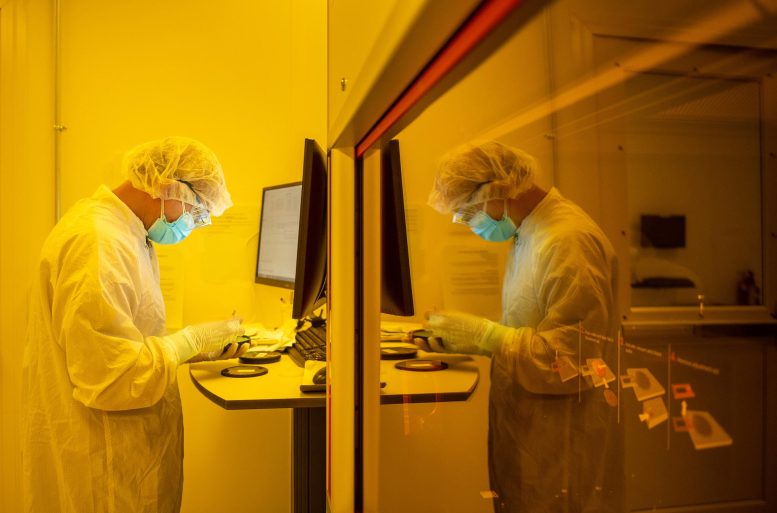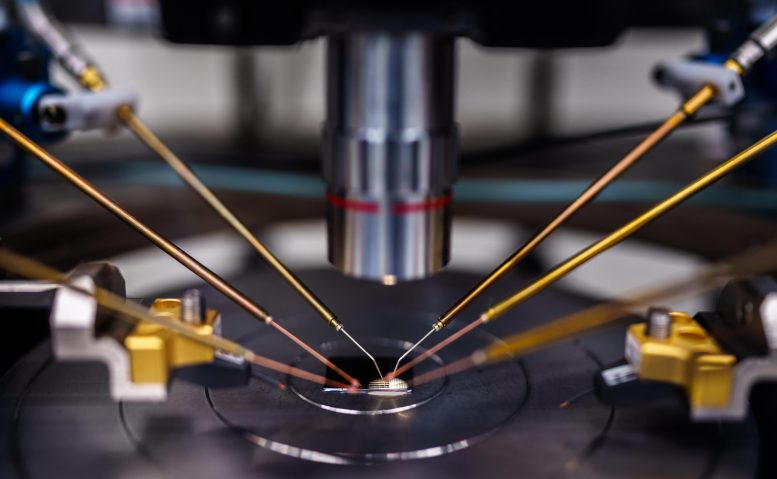
Once a dominant force in chipmaking, the United States has watched its lead slip to other nations—but Sandia National Laboratories is on a mission to reverse that trend.
By joining the National Semiconductor Technology Center under the CHIPS and Science Act, Sandia aims to drive breakthroughs in advanced chip production, from cutting-edge “chiplet” designs to quantum-ready processors.
U.S. Semiconductor Decline and Urgent Comeback
Sandia National Laboratories has joined a new partnership aimed at helping the United States regain its leadership in semiconductor manufacturing.
While the U.S. was considered a powerhouse in chip production in the 1990s, fabricating more than 35% of the world’s semiconductors, that share has since dropped to 12%. Today, the U.S. manufactures none of the world’s most advanced chips which power technologies like smartphones, owned by 71% of the world’s population, as well as self-driving cars, quantum computers, and artificial intelligence-powered devices and programs.
Sandia hopes to help change that. It recently became the first national lab to join the U.S. National Semiconductor Technology Center. The NSTC was established under the CHIPS and Science Act to accelerate innovation and address some of the country’s most pressing technology challenges.
“We have pioneered the way for other labs to join,” said Mary Monson, Sandia’s senior manager of Technology Partnerships and Business Development. “The CHIPS Act has brought the band back together, you could say. By including the national labs, U.S. companies, and academia, it’s really a force multiplier.”

MESA and Advanced Chip Capabilities
Sandia has a long history of contributing to the semiconductor industry through research and development partnerships, its Microsystems Engineering, Science and Applications facility known as MESA, and its advanced cleanrooms for developing next-generation technologies. Through its NSTC partnerships, Sandia hopes to strengthen U.S. semiconductor manufacturing and research and development, enhance national security production, and foster the innovation of new technologies that sets the nation apart globally.
“The big goal is to strengthen capabilities. Industry is moving fast, so we are keeping abreast of everything happening and incorporating what will help us deliver more efficiently on our national security mission. It’s about looking at innovative ways of partnering and expediting the process,” Monson said.
Pandemic Chip Shortage and Global Stakes
The urgency of the effort is evident. The pandemic provided a perfect example, as car lots were left bare and manufacturers sat idle, waiting for chips to be produced to build new vehicles.
“An average car contains 1,400 chips and electric vehicles use more than 3,000,” said Rick McCormick, Sandia’s senior scientist for semiconductor technology strategy. McCormick is helping lead Sandia’s new role. “Other nations around the globe are investing more than $300 billion to be leaders in semiconductor manufacturing. The U.S. CHIPS Act is our way of ‘keeping up with the Joneses.’ One goal is for the U.S. to have more than 25% of the global capacity for state-of-the-art chips by 2032.”

Next-Gen Chips and Chiplet Innovation
Sandia is positioned to play a key role in creating the chips of the future.
“More than $12 billion in research and development spending is planned under CHIPS, including a $3 billion program to create an ecosystem for packaging assemblies of chiplets,” McCormick said. “These chiplets communicate at low energy and high speed as if they were a large expensive chip.”
Modern commercial AI processors use this approach, and Sandia’s resources and partnerships can help expand access to small companies and national security applications. MESA already fabricates high-reliability chiplet assembly products for the stockpile and nonproliferation applications.
Building the Semiconductor Workforce
McCormick said Sandia could also play a major role in training the workforce of the future. The government has invested billions of dollars in new factories, all of which need to be staffed by STEM students.
“There is a potential crisis looming,” McCormick said. “The Semiconductor Industry Association anticipates that the U.S. will need 60,000 to 70,000 more workers, so we need to help engage the STEM workforce. That effort will also help Sandia bolster its staffing pipeline.”
Sharing Facilities and Fostering Tech Transfer
As part of its membership, Sandia will offer access to some of its facilities to other NSTC members, fostering collaboration and partnerships. Tech transfer is a core part of Sandia’s missions, and this initiative will build on that by helping private partners increase their stake in the industry while enabling Sandia to build on its own mission.
“We will be helping develop suppliers and strengthen our capabilities,” Monson said. “We are a government resource for semiconductor knowledge. We are in this evolving landscape and have a front row seat to what it will look like over the next 20 years. We are helping support technology and strengthening our national security capabilities and mission delivery.”
Never miss a breakthrough: Join the SciTechDaily newsletter.
1 Comment
Is this a PR piece by Sandia to avoid getting cuts from federal spending? Sandia had this role for decades, yet the US still lost market share for chip production. The same can be said of INL on nuclear technology, they’ve gotten govt funding for advanced nuclear technology yet the roll out has been stiflingly slow. The problem? Govt labs are not the solution. Too inefficient and tech transfer is a buzz term.